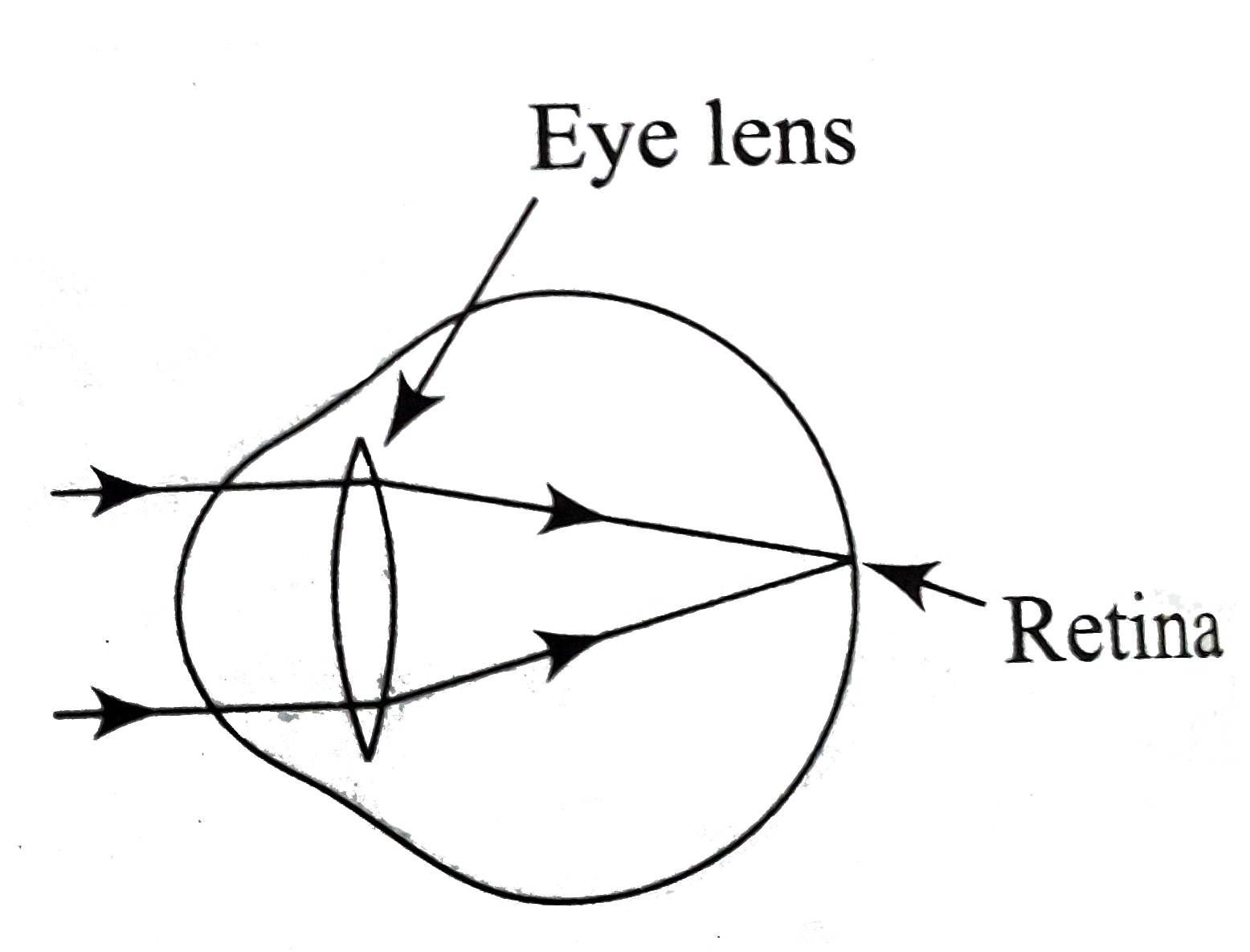A man's near point is 0.5 m and the far point is 3m Power of spectacle lenses required for
(i) reading purposes
(ii) seeing distant objects, respectively are
−2D and 0.33 D
2D and -0.33 D
−2D and 3D
2D and −3D
The correct Answer is:B
Step by step video solution for A man's near point is 0.5 m and the far point is 3m Power of spectacle lenses required for (i) reading purposes (ii) seeing distant objects, respectively are by Physics experts to help you in doubts & scoring excellent marks in Class 12 exams.
Updated on:21/07/2023Topper's Solved these Questions
- OPTICAL INSTRUMENTS BOOK - AAKASH SERIESCHAPTER - OPTICAL INSTRUMENTS EXERCISE - PRACTICE SHEET (EXERCISE -I) (OPTICAL INSTRUMENTS) (LEVEL-I (MAIN)) (SUBJECTIVE OBJECTIVE TYPE QUESTIONS)
21 Videos
- NUCLEIBOOK - AAKASH SERIESCHAPTER - NUCLEIEXERCISE - Practice Exercise
40 Videos
- PHYSICAL WORLDBOOK - AAKASH SERIESCHAPTER - PHYSICAL WORLDEXERCISE - Exercise -I
10 Videos
Similar Questions
The near point of a person is 50cm and the far point is 1.5m. The spectales required for reading purpose and for seeing distant objects are respectively
View SolutionA person's near point is 50cm and his far point 3m. Power of the lenses he requires for
(i) reading and
(ii) for seeing distant stars are
View Solutiona man can see upto 100cm of the distant object. The power of the lens required to see far objects will be:
View SolutionA short sighted person can see distinctly only those objects which lie between 10 cm and 100 cm from him. The power of the spectacle lens required to see a distant object is
View SolutionA myopic adult has a far point at 0.1m. His power of accomodation is 4 diopters.
(i) What power lenses are required to see distant objects ?
(ii) What is his near point without glasses ?
(iii) What is his near point with glasses ? (Take the image distance from the lens of the eye to the retina to be 2 cm).
View SolutionAn object is placed at a distance of 30 cm from a converging lens of focal length 15 cm. A normal eye (near point 25 cm, far point infinity) is placed close to the lens on the other side. (a) Can the eye see the object clearly? (b) What should be the minimum separation between the lens and the eye so that the eye can clearly see the object? c. Can a diverging lens, placed in contact with the converging lens, help in seeing the object clearly when the eye is close to the lens?
View SolutionThe ciliary muscles of eye control the curvature of the lens in the eye and hence can alter the effective focal length of the system. When the muscles are fully relaxed, the focal length is maximum. When the muscles are strained, the curvature of lens increases. That means radius of curvature decreases and focal length decreases. For a clear vision, the image must be on the retina. The image distance is therefore fixed for clear vision and it equals the distance of retina from eye lens. It is about 2.5cm for a grown up person.
A perosn can theoretically have clear vision of an object situated at any large distance from the eye. The smallest distance at which a person can clearly see is related to minimum possible focal length. The ciliary muscles are most strained in this position. For an average grown up person, minimum distance of the object should be around 25cm.
A person suffering from eye defects uses spectacles (eye glass). The function of lens of spectacles is to form the image of the objects within the range in which the person can see clearly. The image o the spectacle lens becomes object for the eye lens and whose image is formed on the retina.
The number of spectacle lens used for th eremedy of eye defect is decided by the power fo the lens required and the number of spectacle lens is equal to the numerical value of the power of lens with sign. For example, if power of the lens required is +3D (converging lens of focal length 100/3cm ), then number of lens will be +3.
For all the calculations required, you can use the lens formula and lensmaker's formula. Assume that the eye lens is equiconvex lens. Neglect the distance between the eye lens and the spectacle lens.

Q. A far sighted man connot see objects clearly unless they are at least 100cm from his eyes. The number of the spectacle lenses that will make his range of clear vision equal to an average grown up person will be
View SolutionThe near point of a person is 75 cm. In order that he may be able to read book at a distance 30 cm. The power of spectacles lenses should be
View SolutionThe force of repulsion between two point charges is F, when these are at distance 0.5m apart. Now the point charges are replaced by spheres of radii 5 cm each having the same charge as that of the respective point charge. The distance between their centres is again kept 0.5 m. Then the force of repulsion will
View SolutionA person has near point at 100 cm. What power of lens is needed to read at 20 cm if he/she uses (a) contact lens, (b) spectacles having glasses 2.0 cm separated from the eyes?
View Solution
